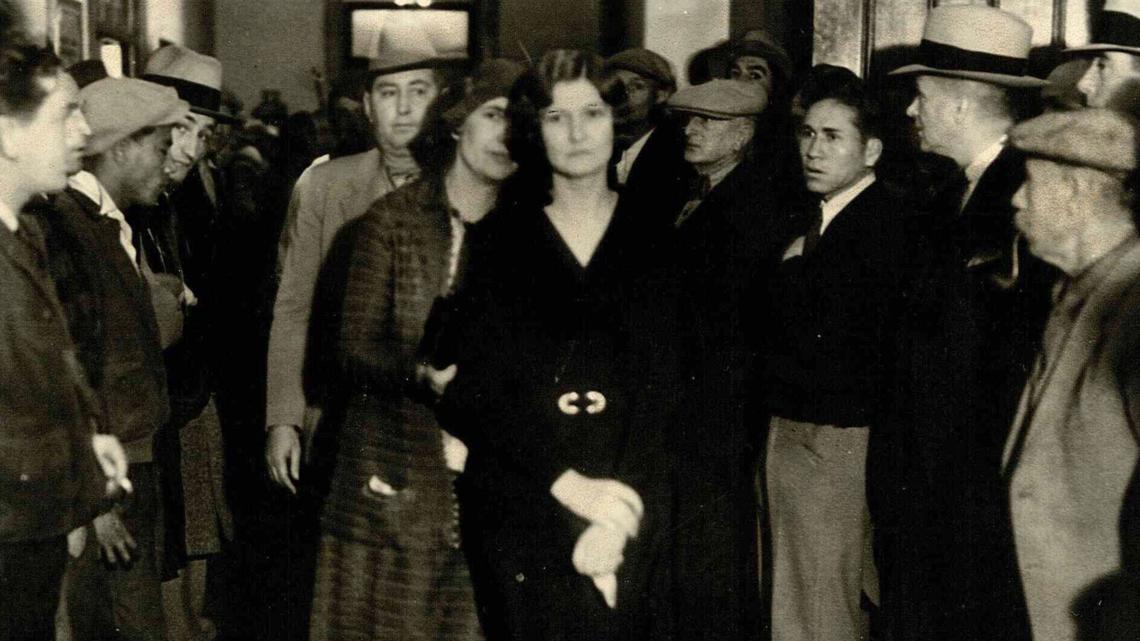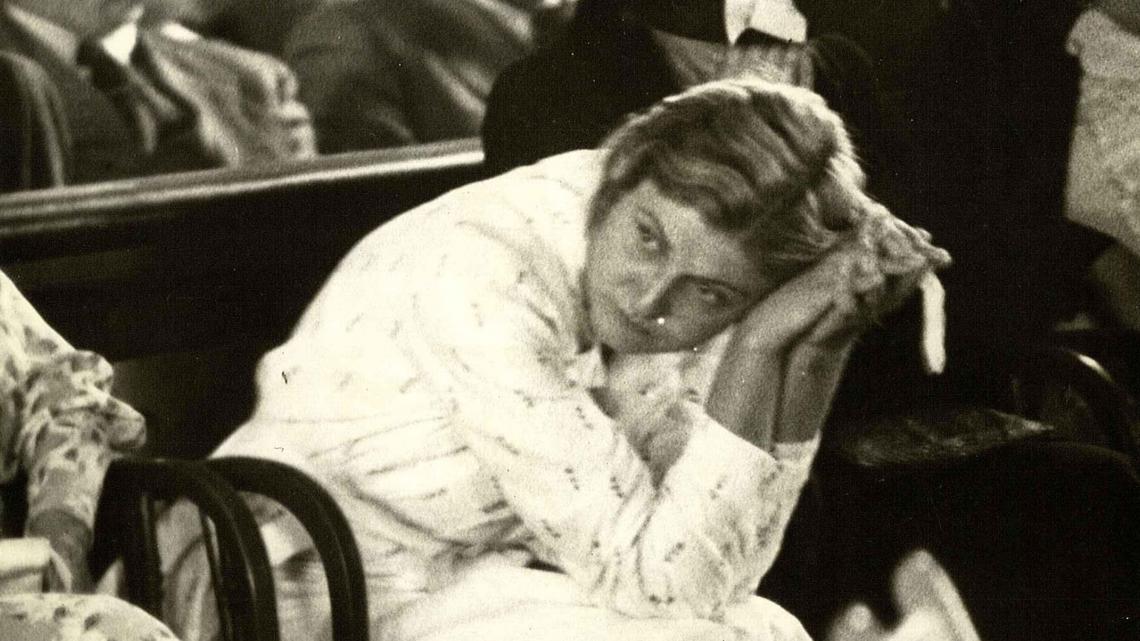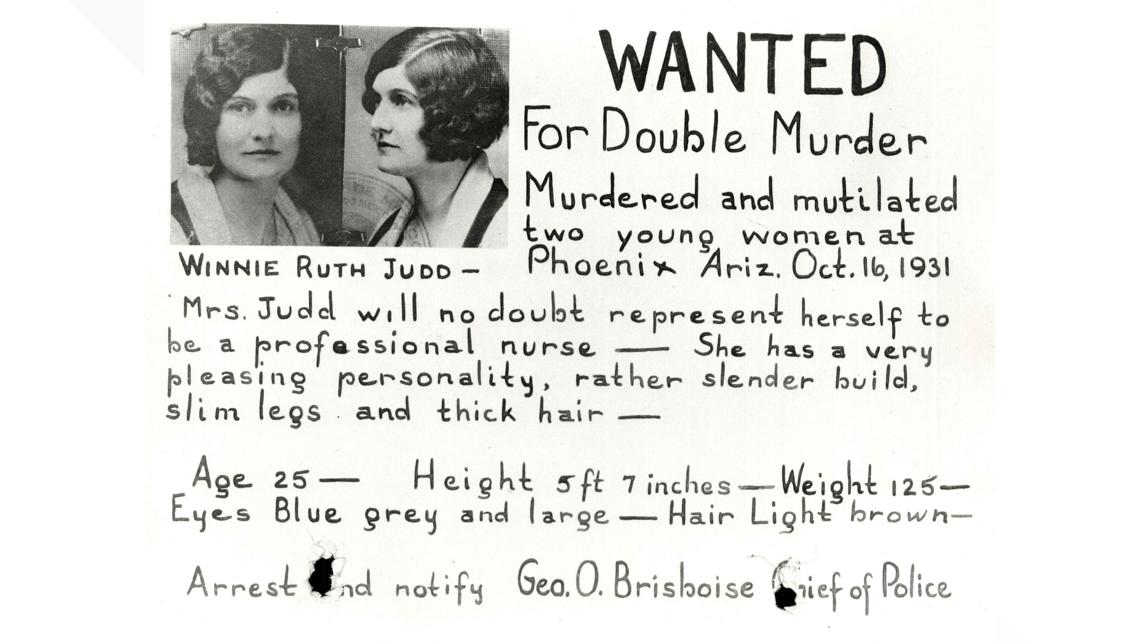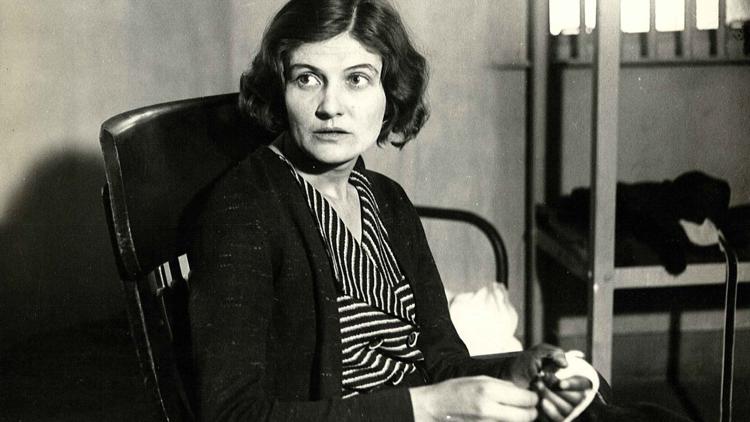PHOENIX — It's been 93 years since Winnie Ruth Judd killed two of her friends in their Phoenix apartment and jammed them into her luggage before boarding a train bound for San Fransisco.
Her sensationalized murder trial and release from an execution ensured that the infamous "trunk murderess" lives in Arizona's memory nearly a century later.
On Oct. 16, 1931, then-25-year-old Judd joined her friends — Agnes Anne LeRoi and Hedvig Samuelson — for a girls' night at their apartment. During what should have been dinner and drinks, a fight broke out between the three women.
Though the cause of the fight remains a mystery, it is certain that someone pulled a gun and all three women were shot. Judd survived — she was shot in her left hand — her friends did not.


Judd went on to shove LeRoi's body into a large luggage trunk. When Samuelson's body wouldn't fit, Judd dissected her and hid the parts of her body amidst the rest of her luggage.
Two days later, Judd boarded a train to Los Angeles with the trunks and was caught after a baggage handler detected a foul odor coming from the suspect's luggage. Police were waiting for her at the station in California.
Her trial started a few months later on Jan. 19, 1932, at the Maricopa County Courthouse and the case became headline news. Labeled "trunk murderess" and "tiger woman," Judd claimed that she acted in self-defense but was found ultimately found guilty.
Judd was sentenced to death by hanging but was called in for an insanity hearing days before her execution.
There, she was found to be mentally incompetent, resulting in her being committed to the Arizona State Hospital. Judd would escape from the facility seven times before she was pardoned by Arizona Governor Jack Williams and released on parole in 1971.


After her release, Judd left Arizona for northern California and took on the name Marian Lane — the identity she used during her last and longest escape attempt.
Later in her life, Judd was interviewed by one of Arizona's most acclaimed journalists, Jana Bommersbach. Bommersbach would go on to write The Trunk Murderess: Winnie Ruth Judd, providing one of the deepest looks into a strange and long-running case that shaped the trajectory of a young Phoenix.
Between her time on death row and in the Arizona State Hospital, Judd spent roughly 40 years of her life incarcerated. She returned to Phoenix a few years before her death, where she died on Oct. 23, 1998, at the age of 93.
Today, her story continues evolve as new research uncovers new perspectives. In February, the Phoenix Theatre Company debuted The Truth About Winnie Ruth Judd, a "bizarre investigative play" that reenacted Judd's life. Just this month, author Laurie Notaro released The Murderess: A Novel — the culmination of 10 years of research into primary documents about Judd's case.


Photos provided by the Arizona State Library Archives via the Arizona Memory Project.
>> Download the 12News app for the latest local breaking news straight to your phone.



